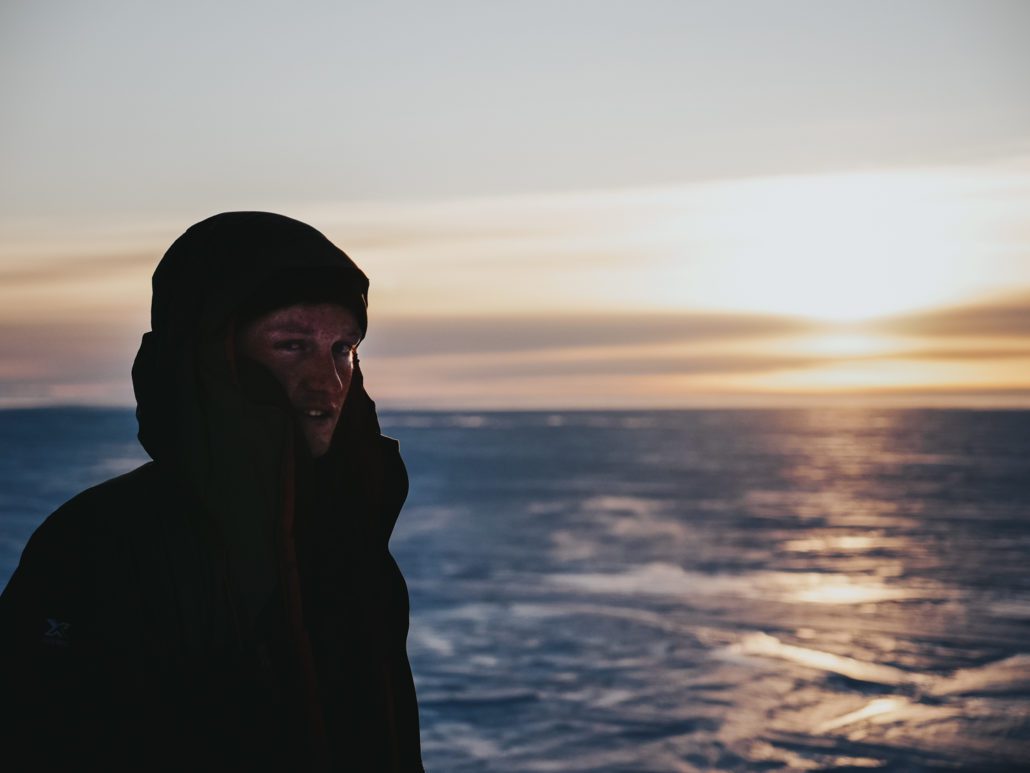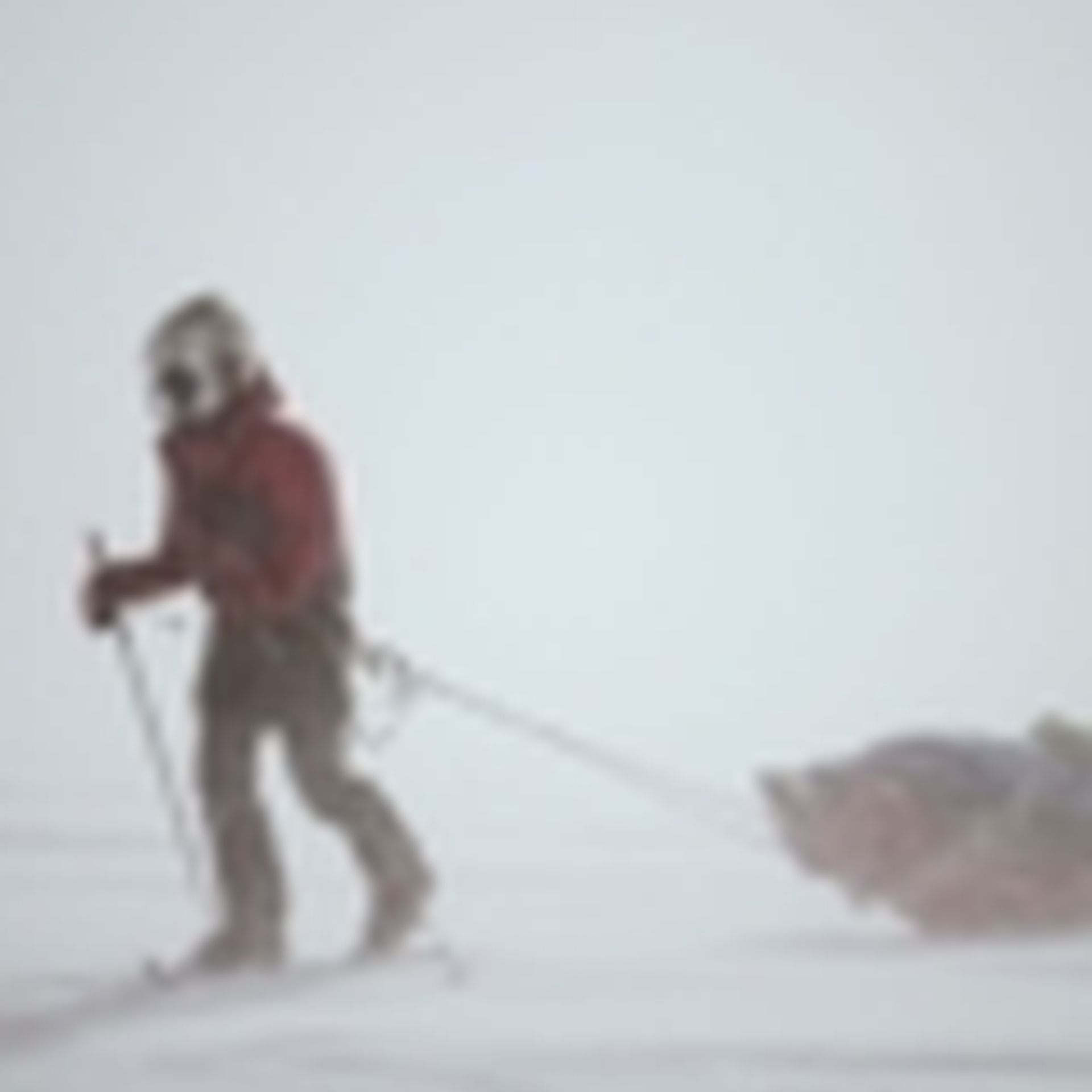Following in Nansen’s Footsteps…
After some time for reflection following the completion the mammoth crossing of the Greenland ice cap, we caught up with Keith Parsons to get his perspective on the expedition, the biggest challenges he faced, and what he learned about himself through the experience…
 Keith Parsons
Keith Parsons Just being in Greenland. It was such a unique, incredible place and I hadn’t had a lot of experience in extreme climates or wilderness locations. The opportunity to see that part of the world and particularly the isolated and wild east coast of Greenland were the best things for me.
What was the most challenging part?
I had the job of taking photos and making a film about the trip, which added some technical, as well as physical and mental challenges to my experience. There was continually something to do, keep batteries warm, set up the solar charger. Although I was able to keep the cameras working in the extreme conditions, such as negative 35 degree temperatures, snow storms, and 135km/hr winds, we were supported by Panasonic with a couple of GH5 cameras for the trip, which performed perfectly in the testing conditions. I also used a drone, which is designed to work in positive temperatures but surprisingly worked well in the polar setting. To complete the expedition and also to operate as a content creator in that scenario was pretty rewarding personally.
What went through your mind when you were finally completed the expedition?
It was a bittersweet moment. On the one hand it was very rewarding and I was proud of what we had achieved as a team and come together to do. Seeing the east coast, mountains and land after four weeks of ice and snow was quite surreal. On the other hand, I really didn’t want it to end and it has been quite strange to adjust back to the real world. To fly back to Iceland, walk down the street and see advertising, endless food choices and people fussing over their appearance, was quite a reverse culture shock after spending four weeks with all of that stripped away from you.
What did you learn or discover about yourself?
I had a lot of doubt before I left and was slightly anxious about going into the unknown, being in a cold climate and working with a bunch of people I didn’t know. But once I got out there I found everything was possible, and I was capable, which was an amazing thing to be able to test out and discover.
What skills did you have that you found most valuable?
My physical skills certainly helped, as I’m kinda fit and have decent endurance. This certainly helped trying to get in front of the group to film or catching up after chasing them with the drone. Beyond that, softer skills, such as being able to get along with others was valuable and we all came out the other side as friends, and we will all cherish those relationships and shared experiences for years to come.
A comment about the team itself?
It was interesting to watch the other team members grow as well. Everyone brought something different to the expedition, whether that was a physical strength or a softer skill or experience. However, without all of us together, the experience wouldn’t have come off with the success that it did.
What was something you experienced that was different to your expectations?
Just getting there [to Greenland] and finding as a person I could adapt to such a hostile environment, operate successfully, and overcome all the mental things that come with the lack of stimulus and day-to-day grind of it all. That is a success in itself.
Reflecting on what you know of Nansen’s crossing – what would you consider some of the similarities and key differences on this trip?
Following in Nansen’s footsteps was an incredible aspect of the trip, as his legacy had special meaning for me, as my partner is a proud Norwegian. I was already very familiar with his story before the trip and found a lot of similarities between our stories and outlook on the world. The team has even made jokes that I look a bit like Nansen. Equally as impressive as his explorations for me, is his work as a humanitarian, a space in which I also work. It was special for me to have Nansen’s story as the backbone for the trip. The sheer audacity of what he did 130 years ago, to get a bunch of capable people together, put two dots on the map and say ‘we’re going between them’ without proper regard for his or others’ lives, was astonishing. During the expedition I often reflected on what it would have been like for Nansen’s team, which hunted fresh food across the ice cap and slept in reindeer skins. In contrast, we ate our freeze-dried food while wearing the best gear money could buy, charged our gear by fancy solar equipment and will share the story not just on the printed page but across a myriad of platforms. In many ways our trip was a whole new thing in comparison with Nansen.
After the trip I was fortunate to visit Nansen’s estate called Polhøgda (The Polar Heights), on the outskirts of Oslo. It was an incredible experience to stand in his study, which has been preserved basically as it was when he passed away in 1930, adorned with a polar bear rug on the floor, Inuit glasses he’d adapted, first editions of his books, and the rifle he took on the trip, standing in the corner. It was an incredible bookend to the journey.
How have you been inspired to go out and share your story?
I took around 3000 photos and over the next few months will be making a film about the expedition, so I will be sharing my story through the visual medium. I’m excited about sharing what we were able to capture and really hope that it resonates with others, inspiring them to explore, adventure and just get out there.
What did you miss most when you were away?
Not a lot to be honest. I just adapted, embraced the complete simplicity of life on the ice, and loved it. There was nothing to worry about out there and I enjoyed the set routine that involved skiing, eating, filming and taking photographs, and then sleeping before doing it all over again. It couldn’t have been simpler or more enjoyable.
What messages will you be giving to audiences about the trip?
The key message is to show people how possible this was. I hope our experience inspires other people to go exploring in their own way. It doesn’t have to be Greenland. It’s about getting out there and realising there aren’t many barriers once you’re on that start line.
Would you recommend others apply for future expeditions and why?
Absolutely. An opportunity like this only comes along every now and again. Unfortunately there is also a significant cost attached to these sorts of expeditions, and other barriers such as access to guides and specific knowledge, which would be difficult to do without the key support that we were offered by the Trust. I’m so grateful that the Antarctic Heritage Trust selected me for this amazing experience and encourage others to go for it.

 Keith Parsons
Keith Parsons Keith Parsons
Keith Parsons